By Ed Boitano
The clarity of the air was intoxicating as I sat on the the AmaLyra bus in La Havre, France. With small boats in the harbor, I realized it was the same location where Claude Monet created his monumental landmark painting, Impression, Sunrise, which gave birth to the art movement known as Impressionism. Devoid of pictorial realism, it was from his own personal perspective – not from yours or mine – achieved by a series of short impasto brushstrokes and the use of subdued blue-grayish colors, which contrasted with the warmth of the orange sun.
It was revolutionary, but deemed amateurish and unfinished by critics and art institutions; where the visible brushstroke was the antithesis of painting, plus certain elements seemed to be almost cut off in the frame. But, Monet’s work as painter would soon be known throughout the world.
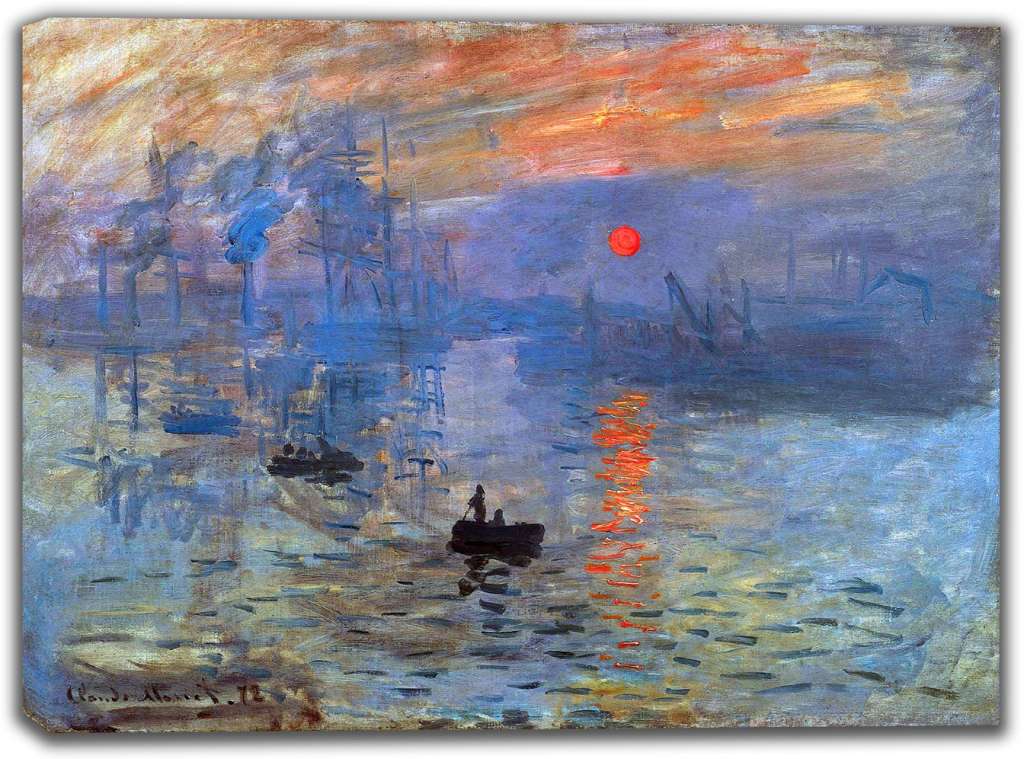
WHAT I LEARNED: The art world would change.
THE RIVER SEINE
The Seine is a 483-mile-long-river in northern France that flows through Paris under its two most famous bridges: The Pont Neuf, the oldest bridge across the river, stands by the Ile de la Cité (City island), once inhabited by the Parisii, a small Gallic tribe in 3rd century BC. Today it is home to Notre-Dame de Paris and Sainte-Chapelle. And the ornate Pont Alexandre III Bridge, with its gilded fames sculptures and nymph reliefs, which reflects the grandeur of the Belle Epoch. Both bridges are classified as a French monument historique. Unlike the Rhine and Danube, also popular for riverboat journeys, the water level on the Seine is regulated by a series of locks, which means smooth sailing as it meets the English Channel.
WHAT I LEARNED: Once you leave Paris, the Seine is historic; charm and beauty await at the many sites stopped at during the riverboat AmaLyra‘s journey.
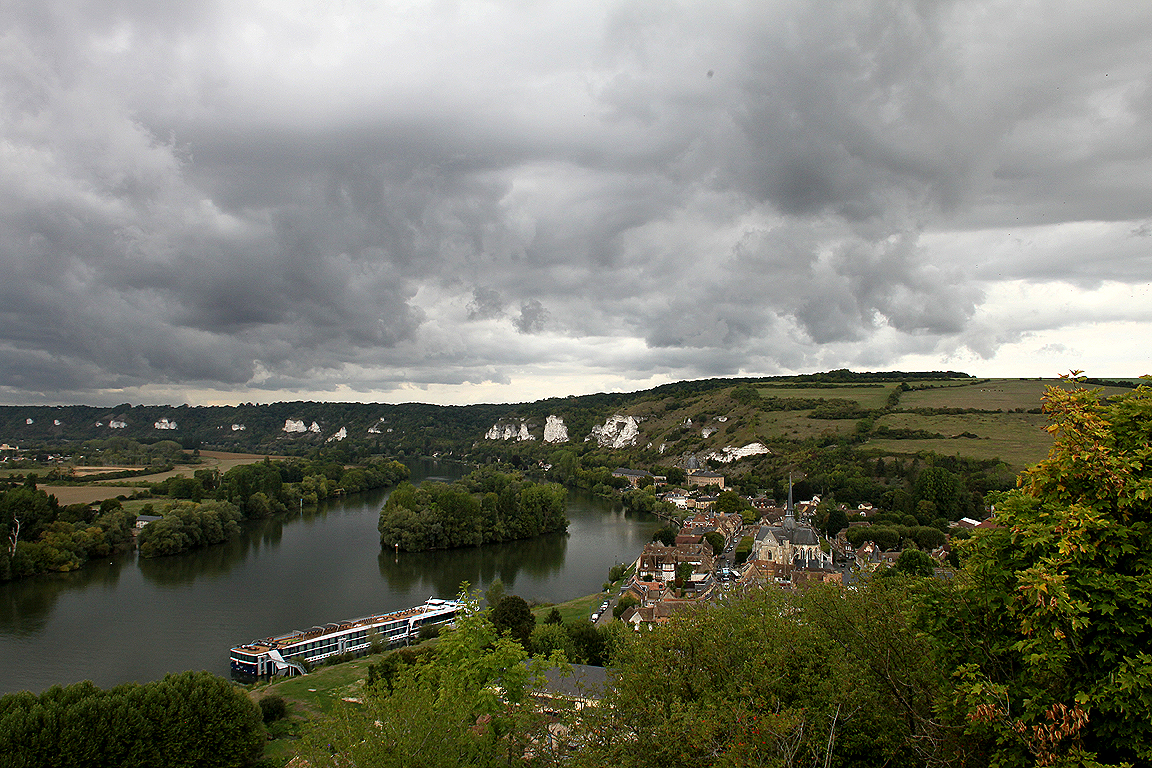
SO, THIS IS NORMANDY
The first Viking raids began between 790 and 800 on the western coast of France. Normandy takes its name from those Viking invaders, referred to as Nortmanni (“Men of the North” or ”Norse Man”). Their savage raids consisted of plundering treasures stored at monasteries by defenseless monks, kidnappings for slave trade or ransom, generally ending with fires of destruction and death. The Vikings initially wintered in Scandinavia, but then found the warmth and comfort in the Lower Seine Valley more to their liking.
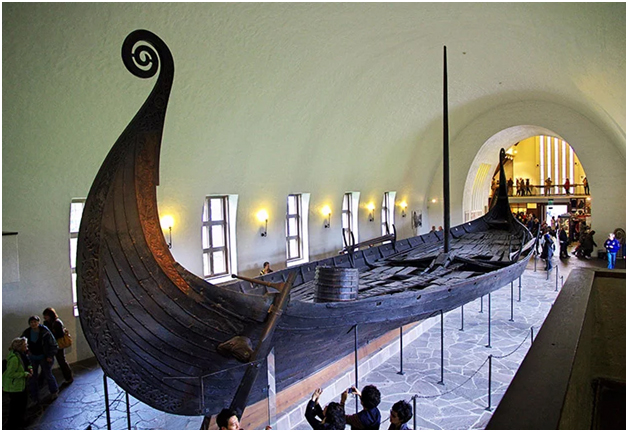
The Viking long-ship is characterized as a light, narrow wooden boat with a shallow draft hull designed for speed, which allowed navigation in shallow waters, making it easy for coving and beach landings. Ships carrying 100 warriors were not uncommon with an estimated 34 rowing positions. Viking leader, Rollo, made it all the way east on the Seine and reached Paris. The Carolingian king, Charles the Simple, struct a deal with Rollo, giving him Rouen and present-day Upper Normandy, establishing the Duchy of Normandy. In exchange, Rollo pledged loyalty to Charles, agreed to baptism and vowed to guard the estuaries of the Seine from future Viking attacks. The rate of Scandinavian colonization was vast, and continued when William the Conquer, Duke of Normandy, defeated England in the Battle of Hastings in 1066, displacing Anglo-Saxon nobility with Norman and reshaping the English language into Anglo-Norman, also known as Anglo-Norman French.
WHAT I LEARNED: It’s complicated.
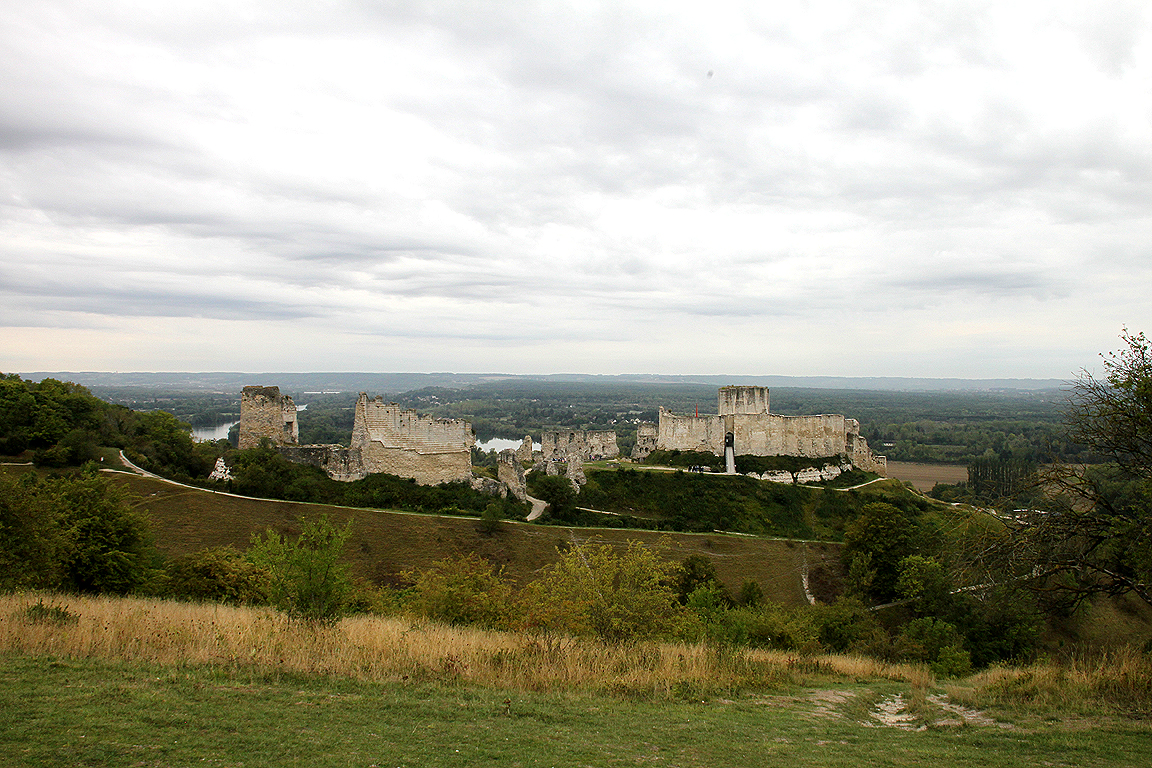
Château Gaillard, once a towering medieval castle overlooking the Seine, was built by Richard Cœur de Lion (“Richard the Lionheart”) which added to his mystique as a great military leader. He is best remembered as a chivalrous knight in the Third Crusade; despite the neglect of his own realm due to long absence.
Richard was also the great-great grandson of William the Conqueror, and simultaneously the King of England (Richard I) and feudal Duke of Normandy. The Château, now surrounded by a dry moat, was regarded as a naturally defensible position. The remains of its dungeon proved to be the most popular site of the tour. Richard did not enjoy Château Gaillard for long; he died from an infected arrow wound to his shoulder, sustained while attacking Chasteu de Chasluç-Chabròl in 1199.
WHAT I LEARNED: During long battles of siege, local non-combatant populations sought refuge in castles for protection. The fortifications were generally well supplied for a siege, but when the extra mouths to feed rapidly diminished the supplies, led to the eviction of civilians – generally women and children – into the hands of the invaders.
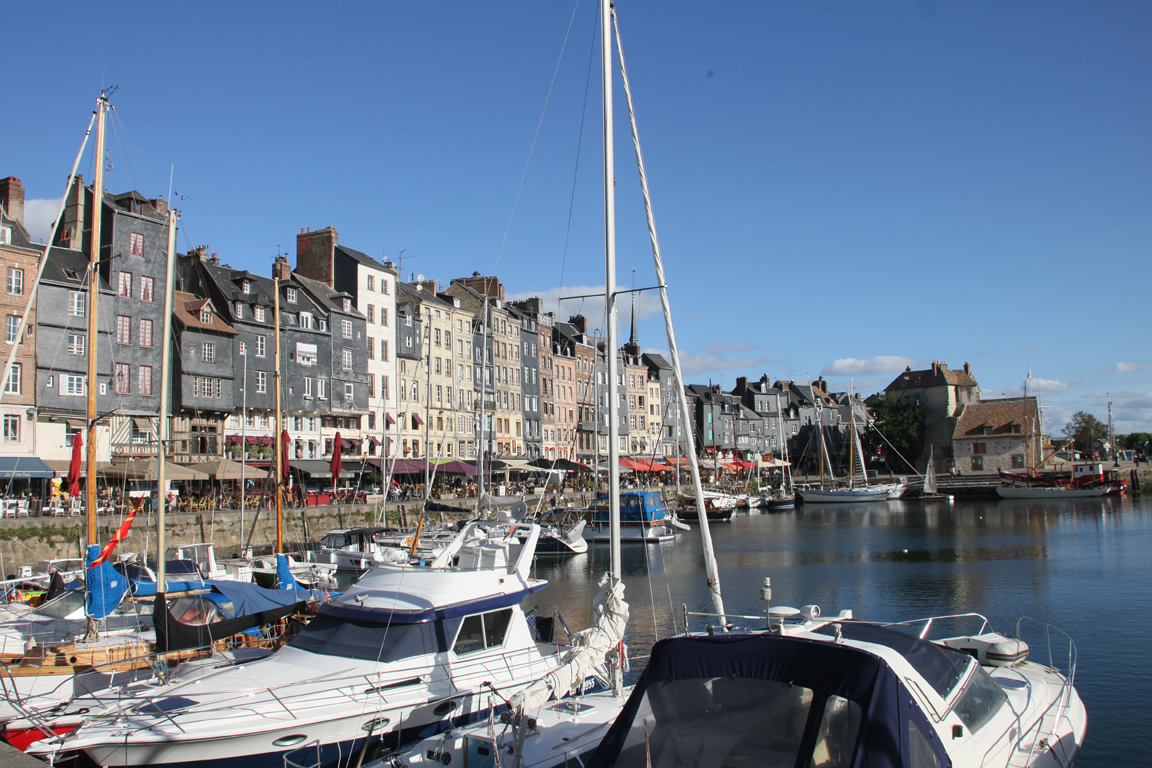
Honfleur is located on the southern bank of the Seine with its sister city La Havre on the other. In the 1600s, Honfleur benefited from a boom in maritime trade which included an expedition by Samuel de Champlain, who founded the city of Quebec in Canada. Today, it is primarily known for its old port, characterized by houses with slate-covered frontages, painted by artists. Monet’s mentor, Eugène Boudin, was born in the Honfleur, and is considered one of the first French landscape painters to paint outdoors. The Sainte-Catherine Church is the largest wooden church in France, with its bell tower across the street to avoid the spread of fire if struct by lightning. Unlike Le Havre, Honfleur was not ravaged by Allied bombings during WWII and was then liberated by the Allied Canadian, British and Belgian armies without any combat.
There’s a chance that tourists outnumbered the locals, but for good reason, with its picturesque cafes hugging the old harbor – you’ll find giant pots of steaming fresh moules (mussels) with bits of camembert cheese waiting for you – fish and vegetable markets, museums and art galleries, inexpensive souvenir shops, and simply strolling through its historic cobblestone streets and functioning old harbor.
WHAT I LEARNED: The people of Honfleur are referred to as Honfleurais.
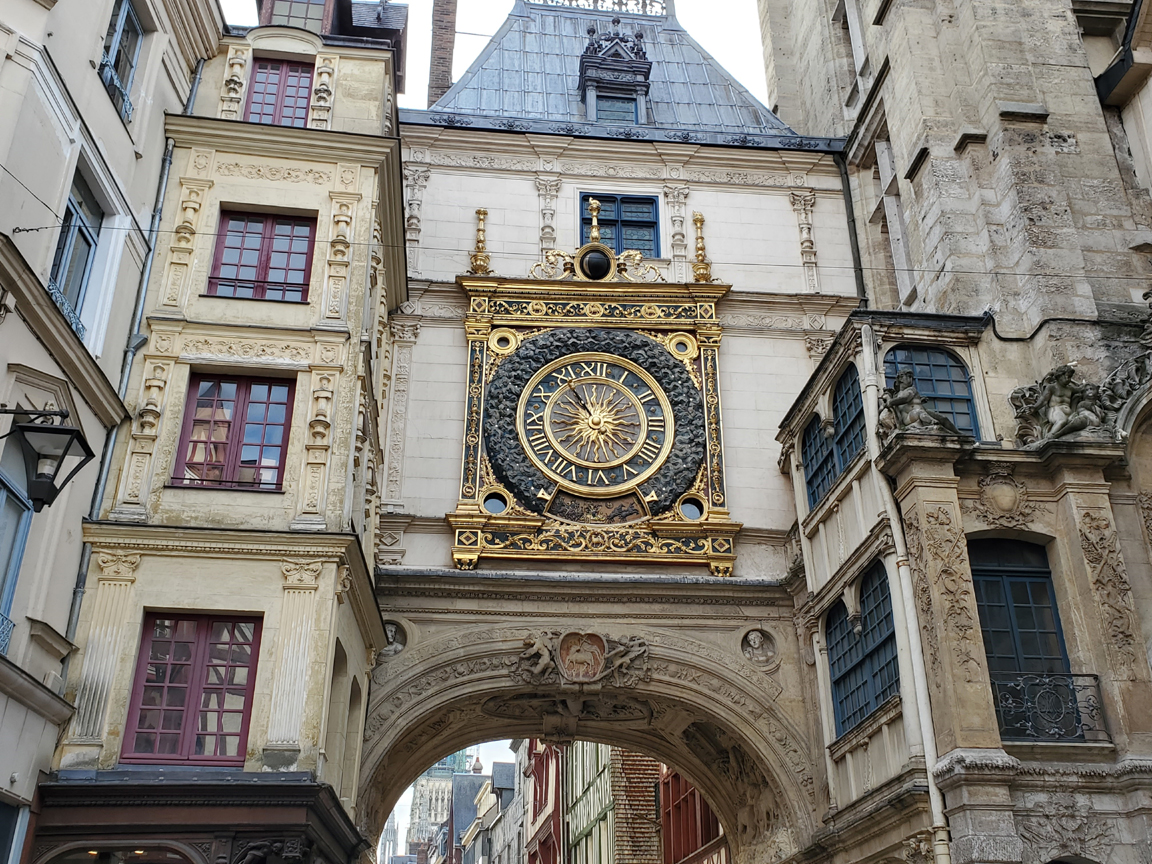
The chimes of the Gros Horloge (Great Clock) wet my excitement as I entered Rouen’s old town center. Resting on a Renaissance arch, the astronomic clock has spanned Rue du Gros-Horloge since the 14th century, and is considered the defining image of Rouen, the capital city of Normandy.
Renowned for its well-preserved architectural heritage and historic monuments, Rouen was able to survive the Hundred Years’ War and later wave of Allied bombings in 1944, despite the destruction of half of the city, leaving more than 1,200 civilians dead and thousands injured. Bullets and shrapnel can still be found lodged within buildings today. Nevertheless, Rouen regained its economic composure in the post-war period thanks to its industrial sites and large seaport, which today is the fifth largest in France.
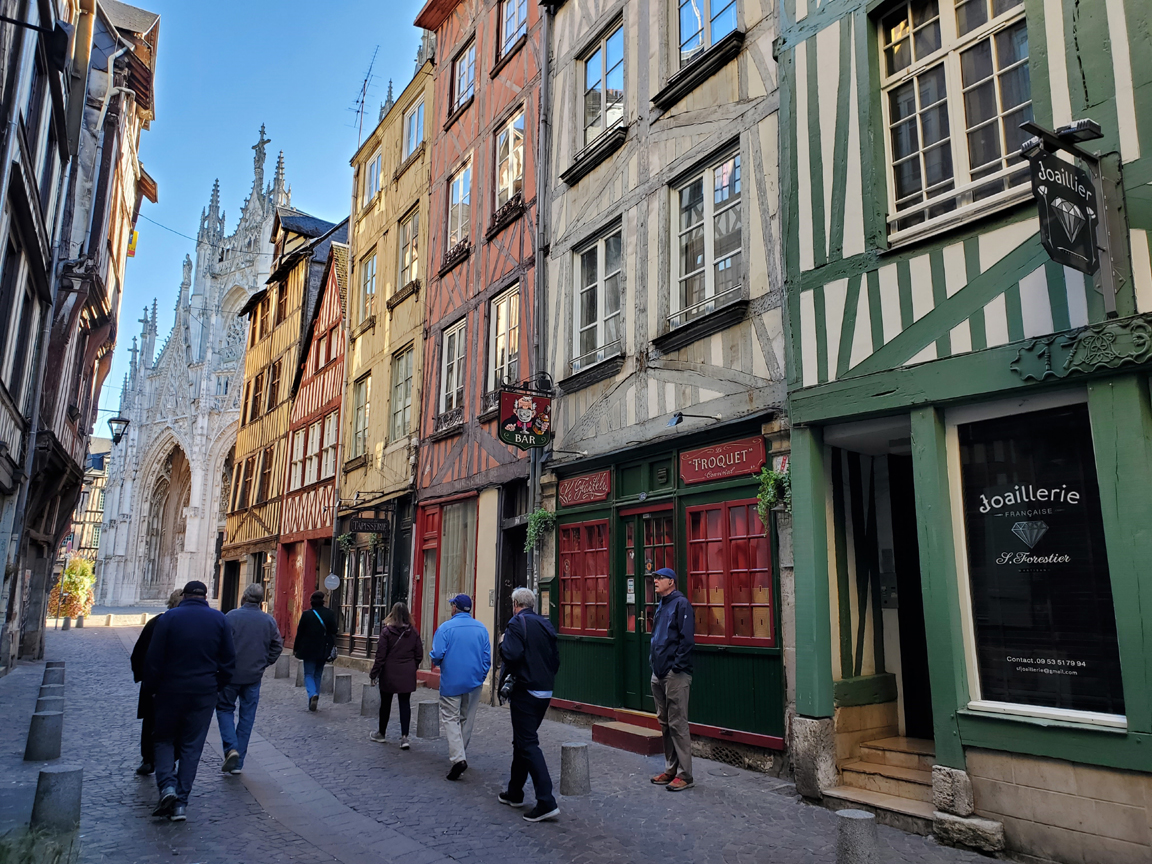
It was once said that you could smell Rouen a mile away. With its dank medieval streets, barely wide enough for a donkey to pass, the Rouennais would drop debris and feces out their windows, creating a cesspool with that particularly unique stench, and sometimes diseases of the pandemic kind. Devoid of sunlight, the ground would remain muddy seemingly forever.
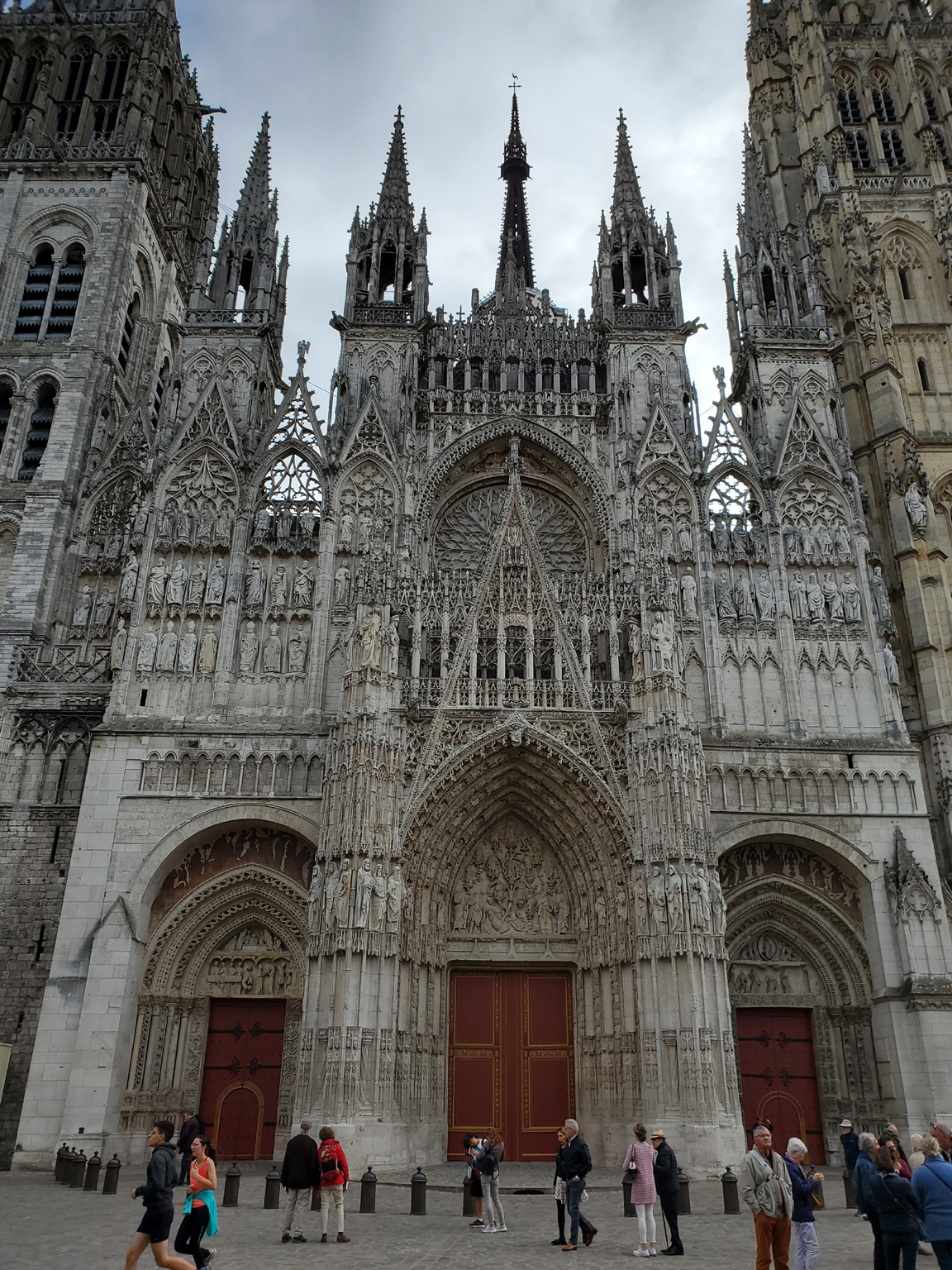
But it was the light of the sun that I was more interested in seeing, or, should I say, the light that Monet sought when he painted the Rouen Cathedral (circa 1506) more than thirty times, between 1892 and 1894. Moving from one canvas to another as the day progressed, he painted the facade with highly textured brushstrokes, making the light palpable at different hours of the day. I had always thought he set his easels in front of the cathedral – though he did twice – but learned he painted through windows of buildings across the street, which explains his compositional perspective from various angles. To view those paintings and other Monet and Impressionist masterpieces, though, requires a trip to the Musée d’Orsay and other museums in Paris.
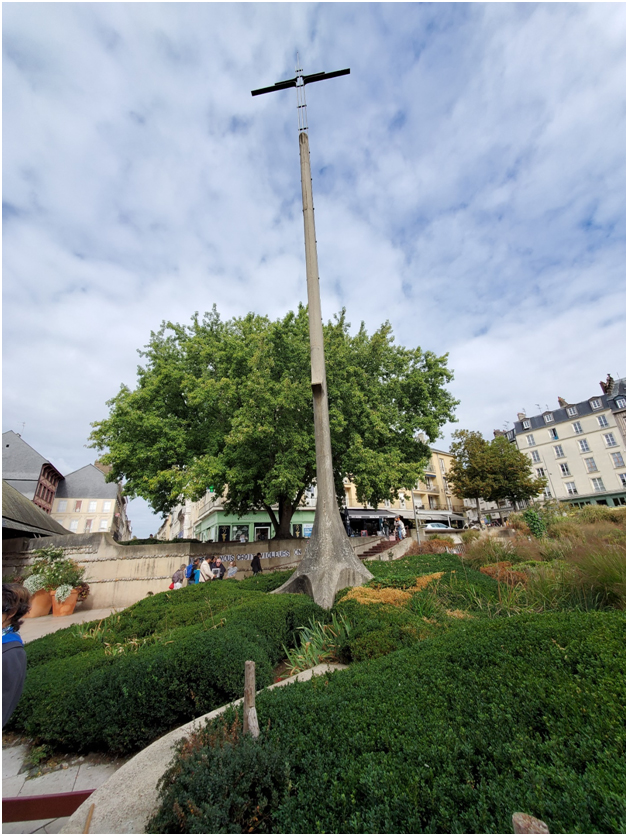
The Jeanne d’Arc Memorial Cross is the centerpiece of a small garden on the Place du Vieux-Marché (market square), the site where a 19-year-old illiterate peasant woman was burned at the stake for witchcraft, heresy and dressing like a man by her English captors. Remember, Rouen was then part of England. But history now explains Jeanne’s death was really more about politics, not theology, when England was at war with France.
The adjacent Church Sainte-Jeanne d’Arc felt a little out of place with its 1970s architecture, surrounded by Norman half-timbered houses, but it does offer an emotional experience with its sweeping curves that evoke the flames that consumed her. Also, its interior is illuminated by the light of 13 pristine Renaissance era stained-glass windows, which were taken from a nearby 16th century church that is now in ruins.
Thirty years after her death, the 19-year-old woman who called herself Jehanne la Pucelle (Joan the Maid; “maid” signifies virginity), was exonerated of all guilt. And by the time she was canonized in 1920 by Pope Benedict XV, Jeanne d’Arc had long been considered one of history’s greatest martyrs, and a patron saint of France.
Renée Jeanne Falconetti in Carl Theodor Dryer’s “La Passion de Jeanne d’Arc.”
Jeanne’s mythical stature has been the inspiration for numerousous works of art in film, song, opera, sculpture, painting, literature and even frivolous computer games and advertising. Her legacy has also inspired two of the cinema’s greatest films: La Passion de Jeanne d’Arc, a 1928 French silent film, directed by Carl Theodor Dryer – famous for the use of the closeup – where you can feel the anguish on actress Renée Jeanne Falconetti’s face. And Robert Bresson’s 1962 minimalistic masterpiece, Procès de Jeanne d’Arc (“The Trial of Joan of Arc”), with both films regarded as profound transcendental works of art.
WHAT I LEARNED: The attractions in Rouen are immense, but, if you have time, walk up to the Musée des Beaux-Arts de Rouen for Impressionist paintings. The building and park facing it are magnificent and entrance is free. Here you will see limited works by Monet, Sisley, Renoir, Degas and Pissarro without any crowds and that tall guy in a hat, plus more artists, such as Corot, Derain, Dufy, Modigliani and Vuillard.
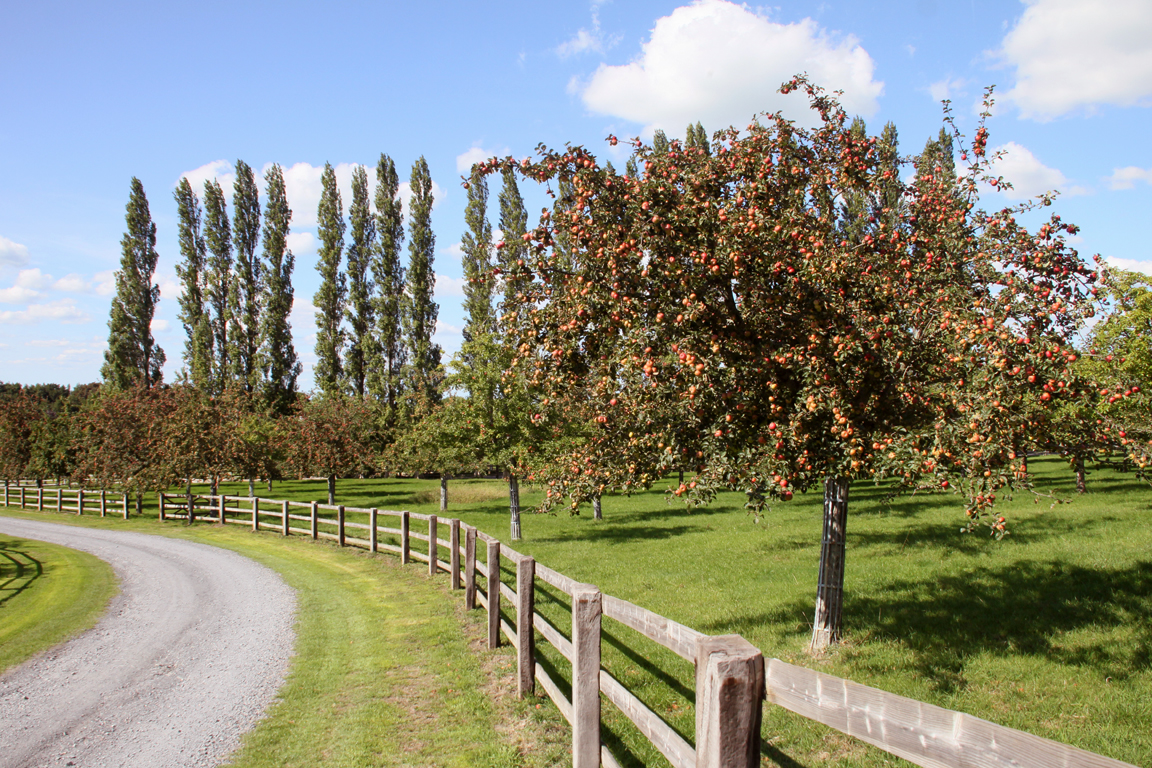
The long day in Rouen closed with A Taste of Normandy, where our group sampled Norman cider, Calvados apple brandy, an abundant selection of local creamy cheeses and pieces of fine Rouennais chocolate. My taste buds were endowed with pleasures of the palate, but with little attention to my own waist line, my photographer and I charged back to the AmaLyra for – what else – cocktails and dinner with the new friends we had made.
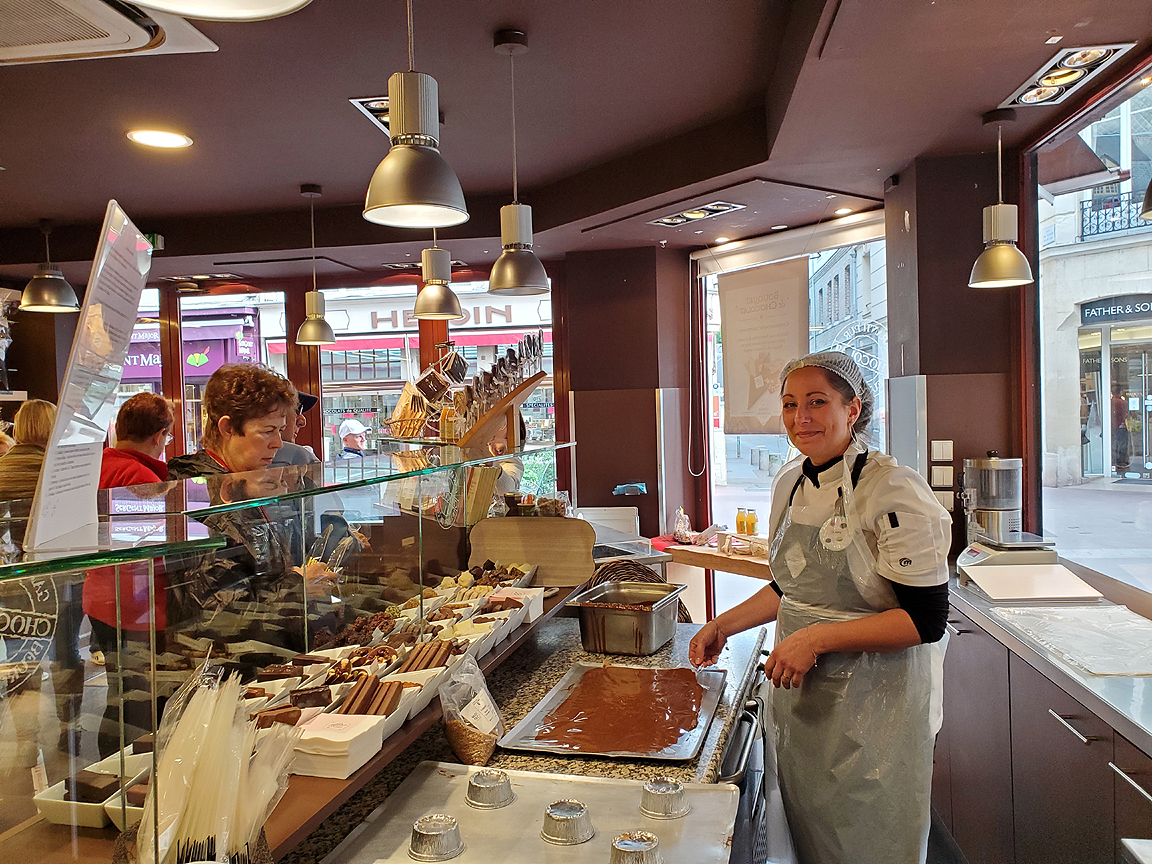
WHAT I LEARNED: Don’t miss it.

Tous à bord!
Related Articles
- See Part II: Monet in Giverny: Down the Seine to Normandy on the AmaLyra, Part II where Ed Boitano describes Monet’s home, gardens and life in Giverny.
- See Part III: From Monet Gardens to Gardens of Stone: Seven Days on the AmaLyra where Ed Boitano writes and Deb Roskamp photographs Operation Overlord Beachheads, German bunkers and the Normandy American Cemetery.
- See Part IV: The Long Week Closes: Seven Days on the AmaLyra where Ed and Deb cover the Louvre Museum, the Château de Saint-Germain-en-Laye and the Musée d’Archéologie Nationale.
Gerald
October 20, 2022 at 8:26 pm
What’s so famous about camembert cheese? Isn’t it just like brie cheese?
Ed Boitano
October 24, 2022 at 8:57 am
Thank you, Gerald – I suspect you might be part of the Brie brigade. Consider me a member as well, but I am a fan of camembert, too. Yes, there are similarities: both cheeses originated in France, but Brie – which first appeared in 774 – hails from its namesake city in the Ile-de-France region; while Camembert is made in Normandy, in the northwest of France, a thousand or so years later. Both Brie and Camembert are made from raw cow’s milk cheeses, but Brie is creamier due to the addition of cream, giving it a more refined taste and smooth texture, while camembert is earthier, evoking the flavor of mushrooms, truffles and wet hay. I’m sure you know, Gerald, the real raw-milk versions of both cheeses remain unavailable in the U.S., so we have no choice but to carry on with lower quality. Have you experienced both in their native lands. Please keep your comments coming, it’s what keeps T-Boy alive.
Cindy
October 24, 2022 at 9:05 am
It makes me mad to see you elitists spending time writing about dainty French cheeses, while America is almost at civil war. Besides, the French are cowards. Its a BIG WASTE OF Time. – Cindy from the Great US of A.
Ed Boitano
October 25, 2022 at 7:22 am
Thank you, Cindy, for such a thoughtful message. Food is the spice of life, and cheese is very much part of it. In fact, Brie (see Eric’s comment from above) and camembert are among the many things that makes my life worth living, along with games of twister, studies on why the pogo stick changed history, and Crimean War battle reenactments. Sadly, I’ve never been able to find a Pickelhelm spiked helmet that fit my large urban elitist head. BTW, Cindy, T-Boy is based in Studio City, CA; may I ask what part of the Great US of A you hail from? Please keep your comments coming. And thanks for reading T-Boy! Ed
Johnny
October 25, 2022 at 7:28 am
Cindy, you must be going through a lot to try and dampen someone’s happiness. Even soldiers need a time of rest. You go on and enjoy the fruits of your labor, Ed. The stories you and the others writers post in Travelingboy helps bring out the stress of everyday life … at least for me.
Ed Boitano
October 25, 2022 at 7:49 am
Thank you, Johnny. Your kind words are very much appreciated.
Cindy
October 28, 2022 at 6:49 pm
Where I live is my business and not yours. I only heard about your piece of shi… Traveling or whatever you call it from my sister I don’t speak to anymore. I should hook you guys up…
Ed Boitano
October 28, 2022 at 6:56 pm
**@tr**********.com
… but I also respond to “Where’s Traveling Boy?” I appreciate you comment, Cindy.
Bob
November 3, 2022 at 8:37 am
I enjoyed reading this piece. It was like I was there, again.
Ed Boitano
November 8, 2022 at 9:52 am
Thank you, Bob. I look forward to the day when we can all sit at dinner table together.
Larry D Sumner
April 17, 2023 at 8:01 pm
Thanks so much for your wonderful descriptions of places visited on the trip to the Normandy beaches on the Amalyra. It brings back so much of the sites we experienced and will be revisited from time to time. I was especially touched by the film on Joan of Arc. The horrible torture she was subjected to as dictated by members of the clergy, solely for wearing pants is almost unbelievable, except that it is an established historical fact. Thank you again. You are truly a gifted writer, and Deb is a very talented photographer.